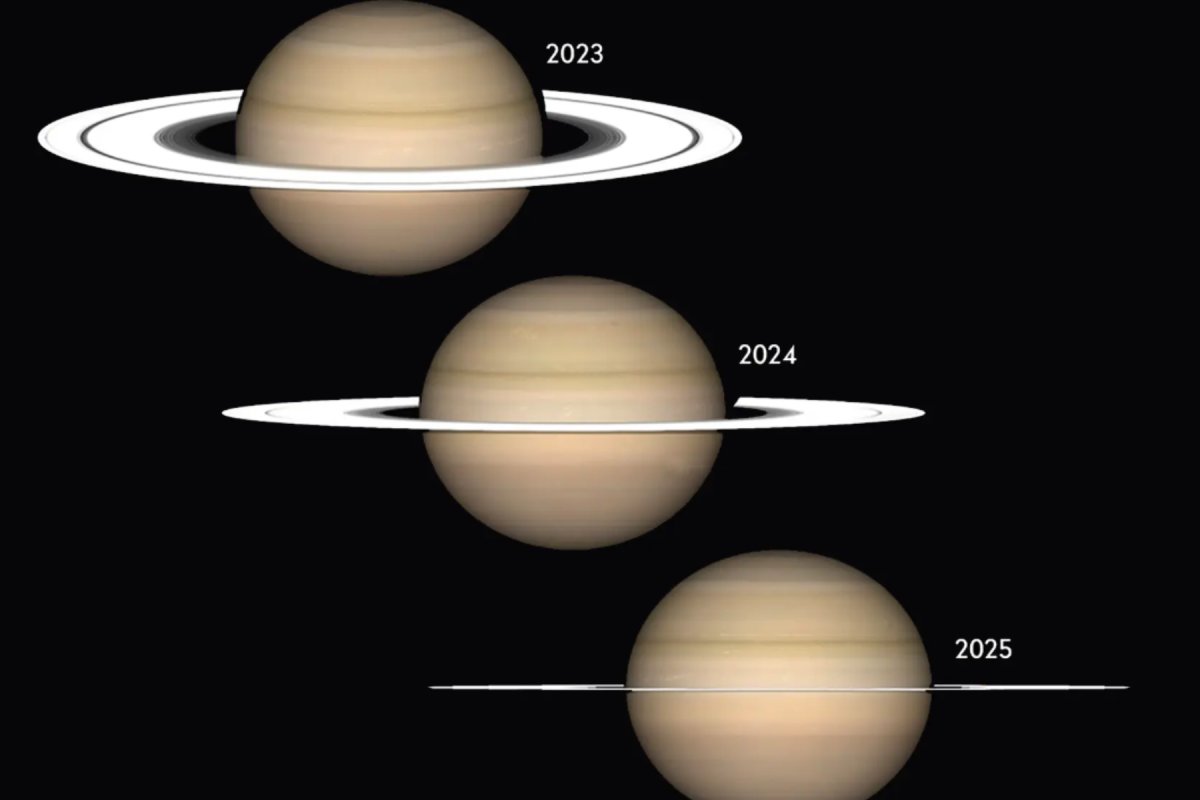Saturn's spectacular rings are due to vanish from view for a breathtaking moment, only two years from now.
The gas giant's huge icy rings will disappear in March 2025, but they will reappear soon after.
This cosmic vanishing act will occur as a result of an optical illusion, due to the Earth being positioned at the exact right spot where the edges of the thin rings are facing toward us, making it look like they have disappeared entirely.

Saturn is the sixth planet from our sun, and the second-largest planet in the solar system, measuring nine times wider than Earth at around 72,000 miles in diameter. Saturn's characteristic rings are made of chunks of ice and rock, thought to have fallen into orbit around the planet after larger cosmic bodies were torn apart by Saturn's gravity. The rings extend out 175,000 miles from the planet's surface, but are incredibly thin, with a vertical height of only around 30 feet in some places.
This strange vanishing of the rings occurs roughly once every 13 to 16 years, when the plane of the gas giant aligns with Earth just right so the rings' thinnest part are facing directly towards us. This happens at Saturn's equinox, which is the point in a planet's orbit when the sun shines directly over the equator. The Earth experiences this twice a year, in March and September, but as Saturn's orbit around the sun takes around 29.4 Earth years, its equinoxes are a lot less common.

The last time this was visible was in September 2009, and will occur again in October 2038. Between then, in 2032, the ringed planet will be best angled, away from the Earth, allowing its rings to be seen in all their glory.
Saturn's rings aren't expected to last forever, however, as scientists predict that they could truly vanish within a few hundred million years: a drop in the ocean on a cosmic time scale.
"We estimate that this 'ring rain' drains an amount of water products that could fill an Olympic-sized swimming pool from Saturn's rings in half an hour," James O'Donoghue, an astronomer and Saturn researcher at NASA's Goddard Space Flight Center in Greenbelt, Maryland, said in a NASA statement in 2018. "From this alone, the entire ring system will be gone in 300 million years, but add to this the Cassini-spacecraft measured ring-material detected falling into Saturn's equator, and the rings have less than 100 million years to live. This is relatively short, compared to Saturn's age of over 4 billion years."
"We are lucky to be around to see Saturn's ring system, which appears to be in the middle of its lifetime. However, if rings are temporary, perhaps we just missed out on seeing giant ring systems of Jupiter, Uranus and Neptune, which have only thin ringlets today!"
Do you have a tip on a science story that Newsweek should be covering? Do you have a question about Saturn? Let us know via science@newsweek.com.
Uncommon Knowledge
Newsweek is committed to challenging conventional wisdom and finding connections in the search for common ground.
Newsweek is committed to challenging conventional wisdom and finding connections in the search for common ground.
About the writer
Jess Thomson is a Newsweek Science Reporter based in London UK. Her focus is reporting on science, technology and healthcare. ... Read more
To read how Newsweek uses AI as a newsroom tool, Click here.





